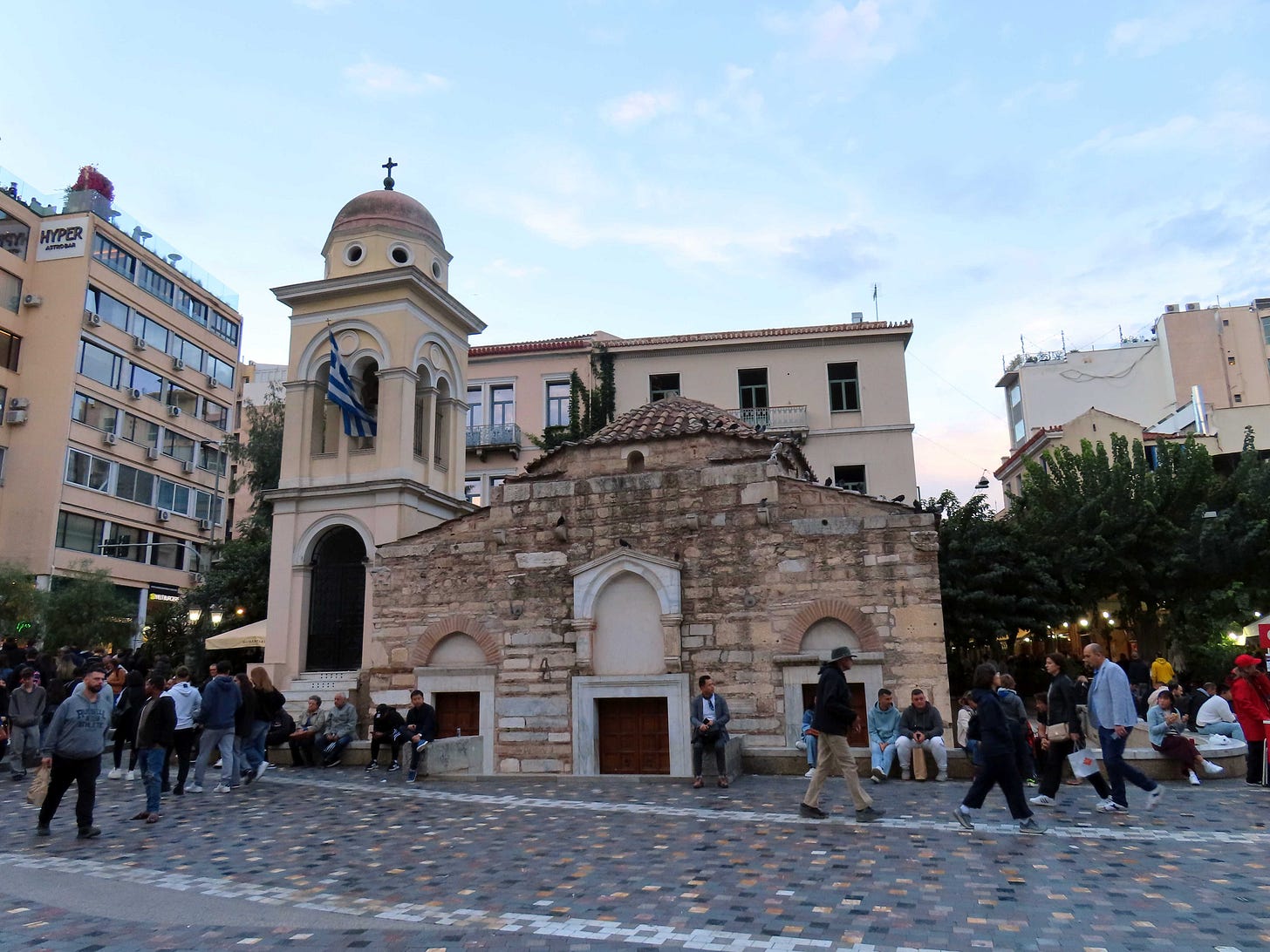In the Footsteps of St. Paul (Part 1)
Spiritual, Cultural, and Liturgical Reflections on a Pilgrimage to Greece & Turkey: Mass in Corinth, Monasteries in Clouds, & more

Dear readers who are receiving this post via email: by clicking on the article’s title, you’ll be brought to the Tradition and Sanity Substack page, where you can view all the photos better than is possible in the email format and where clicking on any image, including in the galleries, will enlarge it. Most of the photos here are mine; a few come from fellow pilgrims and a few from online (these are noted as such).
I will divide my travelogue into three parts. I hope you’ll find something of value in the reflections and commentary. —Dr. K
Last month, I went on pilgrimage to Greece “in the footsteps of St. Paul” (and to some extent, St John), accompanied by two priests, the best escort ever (John Sonnen of St. Charles Pilgrimages), and a couple dozen of the best Catholic laity one could wish to spend time with. As is almost always the case with a short tour like this, our days were so dense, our experiences so saturated, that it has taken weeks just to begin to unravel them and to ponder the significance of this or that moment. Just the other Sunday at Mass, as I heard the chanting of the Epistle from St. Paul to the Thessalonians, I thought: “I’ve been there now—I have something concrete in my imagination when I hear of this place.” And the same with so many other elements in the saint’s letters and in the Acts of the Apostles.
This trip carried a lot of personal significance. As an adolescent in the first fervor of making the Faith my own (and this, very much by the grace of God, since the sort of Catholicism in which I grew up would have augured quite a different outcome), I chose Paul for my confirmation name — very much with the Apostle’s determined preaching of the unadulterated Gospel in mind; and St. John has been a lifelong companion, for my wife and I were married on his feastday, and of course he’s the patron saint of theologians. And how can you not come to feel affection for the author of the Prologue we read at the end of nearly every Latin Mass?
In preparation, I read Mike Aquilina’s Rabbles, Riots, and Ruins, an enjoyable light read about ancient cities, and Fr. Bernard Deutsch’s Our Lady of Ephesus, which makes an irrefutable case for the authenticity of the house of the Virgin Mary just outside Kusadasi, which we visited in our precious half-day in Turkey (John Sonnen and I are already kicking around ideas for a 2026 “in the footsteps of St. Paul, Part 2” that would take place in Turkey; if that actually goes through, you will hear about it here, first!).
I also took time to print out the Gregorian chants for our daily Latin Masses, as I knew ahead of time that we would try to sing the Mass as often as we possibly could. In the event, eight out of nine Masses we celebrated together as a group were Missae Cantatae!

Day 1 was taken up with flying over.
Day 2: Athens
Our first (partial) day in Greece had a few free hours before dinner. I walked around downtown Athens, enjoying the bustle, the aromas, and, of course, the churches.
I walked past an out-of-the-way church and heard singing from inside, so I went into the narthex and peered in. A priest and a couple of cantors were singing Vespers, with a decent number of laity in attendance. The cantors sang wonderfully in their microtonal modes. People went around afterwards kissing icons and lighting candles (as one does). I took a few pictures after the service was over.
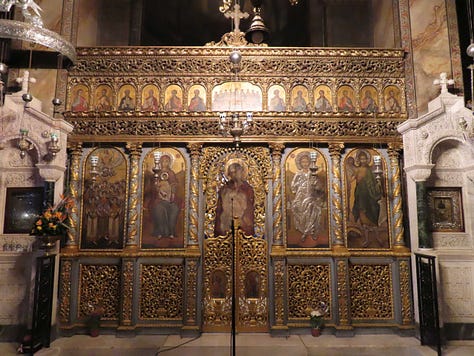



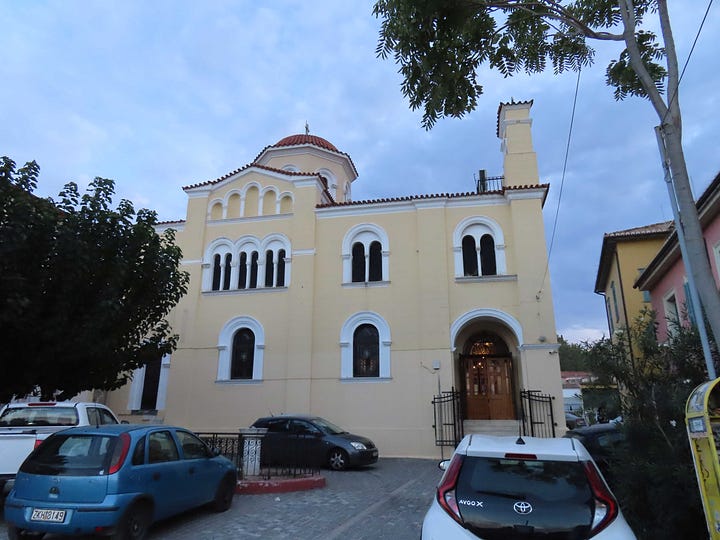
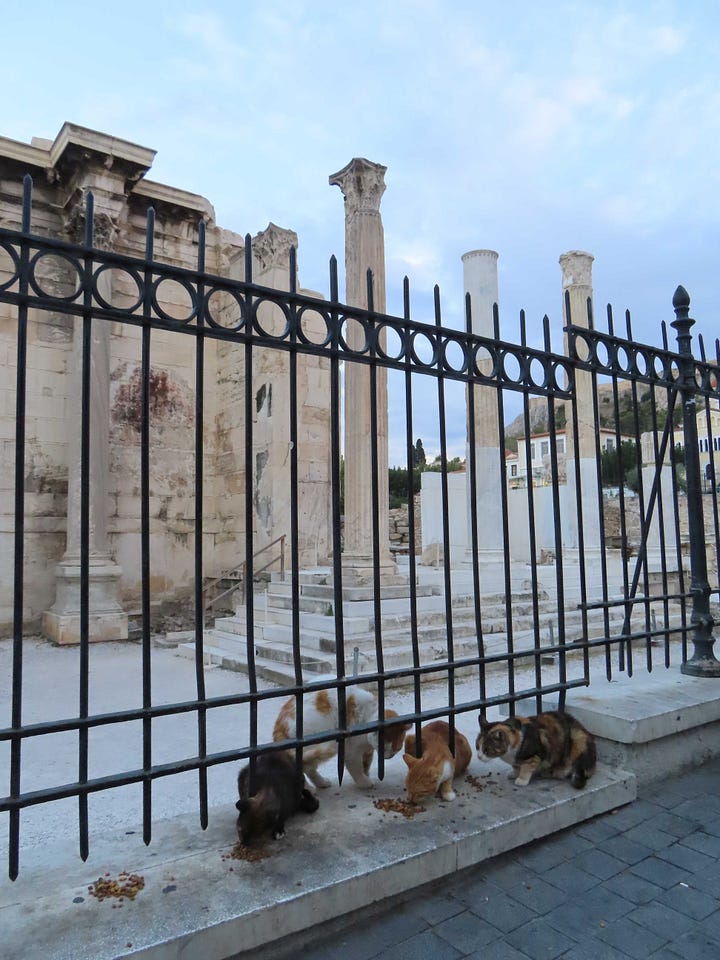
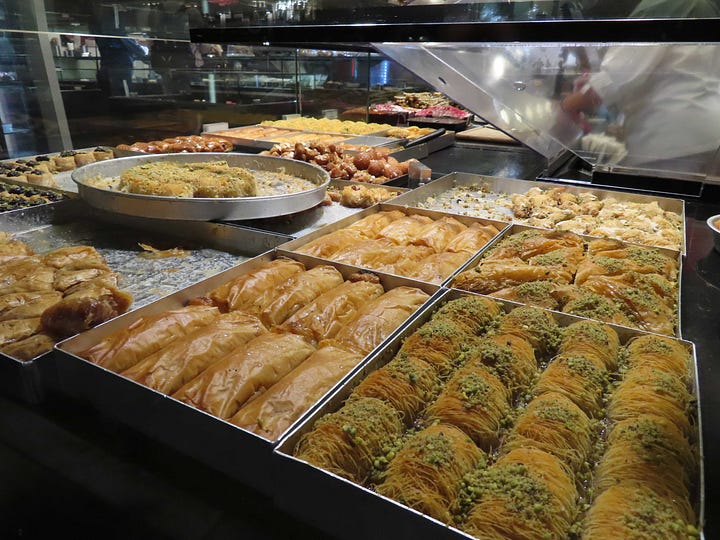
Day 3: Corinth, Cenchreae, the Acropolis
Corinth Canal
On our way down, we stopped to marvel at the engineering accomplishment of the Corinth Canal, “an artificial canal in Greece that connects the Gulf of Corinth in the Ionian Sea with the Saronic Gulf in the Aegean Sea.” The obvious appeal of bypassing a huge amount of land circumnavigation should surprise no one. Although the land to be excavated is only four miles in length, it is solid rock, and requires cutting deep down to get to the water level. Accomplishing this task was a dream of Periander of Corinth in the 7th century BC; then Emperor Nero began to undertake it in 67 AD, but the project was dropped after his death. Other figures were tempted to start again — Herodes Atticus in the 2nd century, and the Venetians in the 17th. However, it was not until the late 19th century that explosives permitted the work finally to be done.
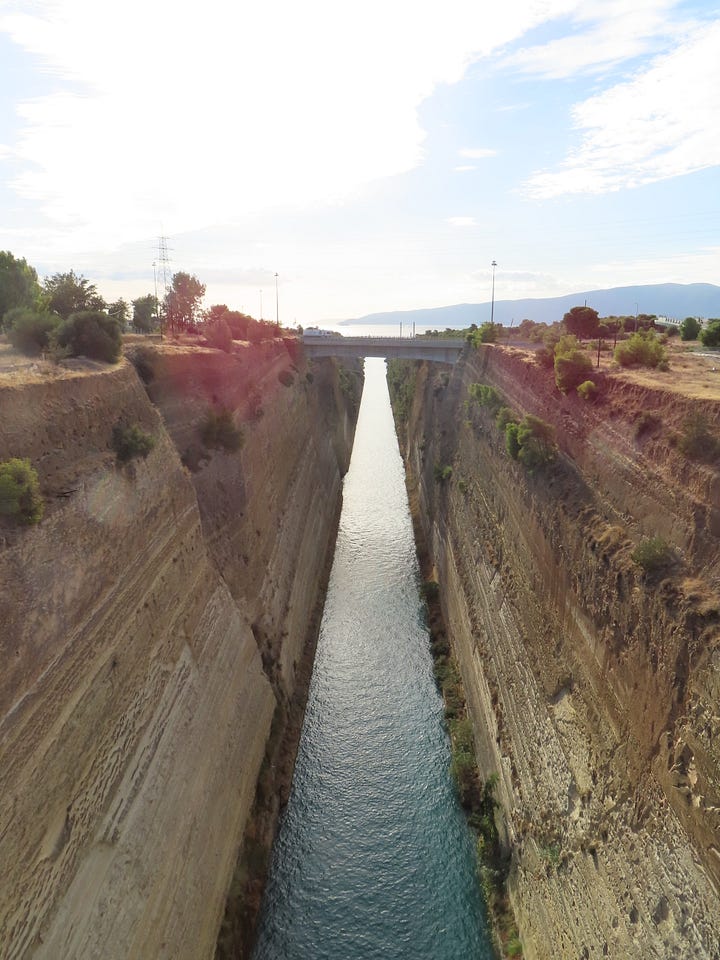
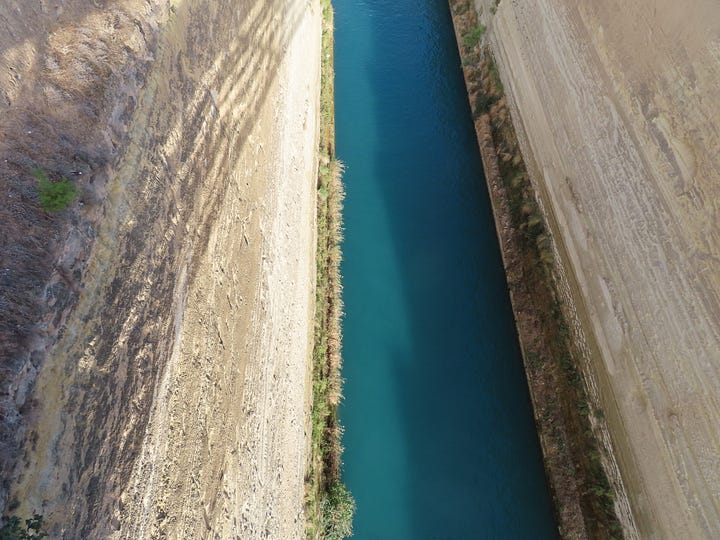
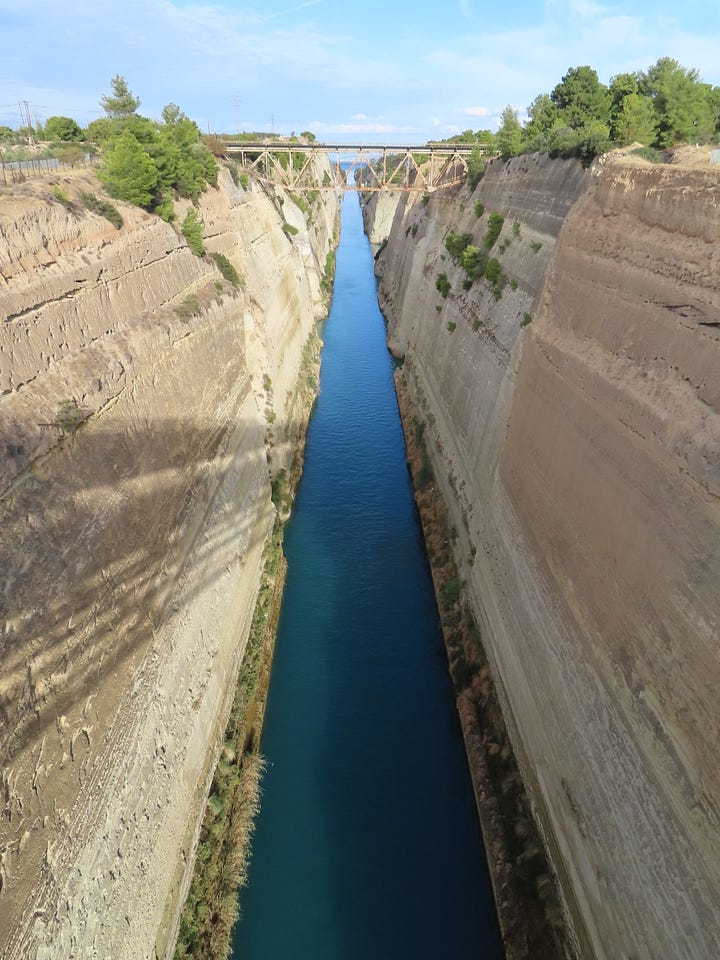
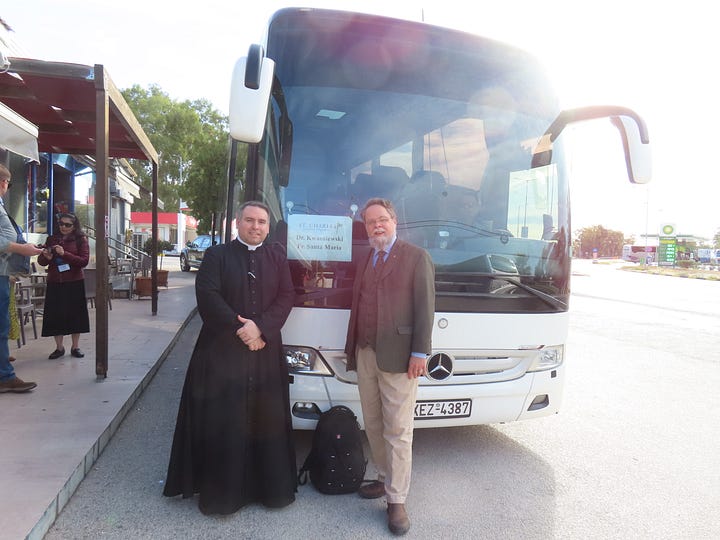
Ancient Corinth
The highlight of our 22nd Sunday after Pentecost was a Missa Cantata at the ancient marketplace of Corinth, where surely St. Paul walked almost 2,000 years ago during the year and a half he spent in this city. Singing with me is Jonathan Arrington:
Keep reading with a 7-day free trial
Subscribe to Tradition and Sanity to keep reading this post and get 7 days of free access to the full post archives.




